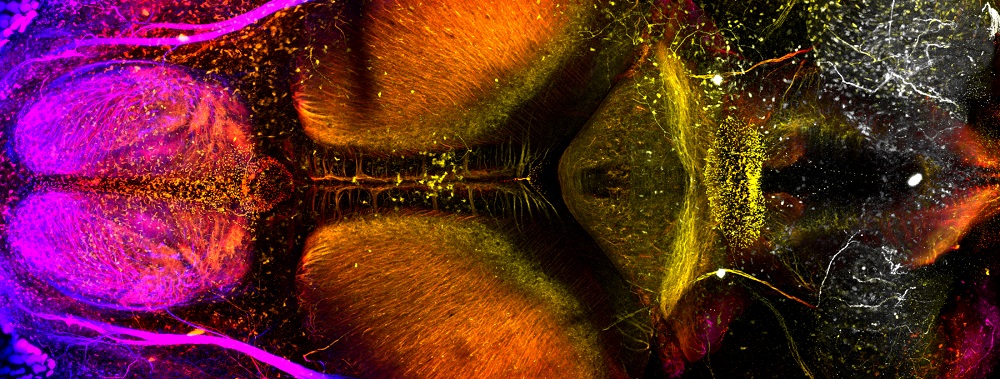Cilia and brain physiology
Cilia and brain physiology

Our main scientific goal is to understand the principles underlying the function and development of neural circuits in health and disease.
Our research program focuses on 4 major topics:
1. The role of cilia and cerebrospinal fluid in the development and function of the nervous system. The cilium is a small cellular appendage projecting from the surface of most cells, like a tiny antenna. It can generate flow or play a structural, sensory or signaling role. In the brain, primary cilia play important development and signaling roles, while motile cilia are involved in the movement and homeostasis of cerebrospinal fluid. We study how ciliary motility and signaling regulate the development and physiology of the nervous system.
2. The mechanisms underlying seizure generations. During epileptic seizures, the brain switches from a balanced to a hyperactive and hypersynchronous state. Many factors can induce epileptic seizures, which include brain trauma, developmental disorders, infections or genetic mutations. We are interested to understand the cellular and molecular mechanisms leading to seizures using various pharmacological and genetic models of seizures.
3. The role of glia in brain physiology and pathophysiology. While neurons have been at the center stage of brain research for decades, glial cells are increasingly recognized for their roles in the development, maturation, and physiology of brain circuits. We study how glia modulate neuronal activity and brain homeostasis at the brain barriers.
4. Personalized medicine. We are developing personalized medicine approaches for the diagnostics and treatment of glioblastoma using patient derived cancer cells.
To address these questions, we use a combination of live imaging, molecular and cell biology techniques, genetics, fluid flow measurements, behavioral analysis and applied mathematics in the zebrafish model system.
For a full list of our publications, please check
https://scholar.google.no/citations?user=MGQIp3wAAAAJ&hl=en
